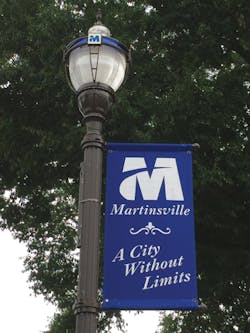Driving Smart City Implementations with Innovative Funding
Using creative mechanisms like performance contracting to pay for infrastructure needs
By Lisa Brown
When you hear the term “smart city” what comes to mind? For many, it’s the image of a futuristic metropolis with all the latest and greatest technologies. While technology is a vital component to smart city development, the focus is on creating the safest, most sustainable and efficient environment possible. The implementation of advanced, integrated technologies is a means to an end, allowing local governments to use the resulting data to improve operations for the municipality and create a better quality of life for residents. However, what most cities struggle with is where to start when it comes to structuring their approach to smart, vertical urban planning.
Staying on Track and Within Budget
As a first step, municipal leaders need to acknowledge that there is a deep, connected relationship between people and infrastructure, and buildings are often the conduits to encourage people to share ideas, be inspired and influence their surroundings. This is often a challenge for cities, where much of their infrastructure is aging and money is restrained, limiting their smart city journey. Addressing infrastructure upgrades can be costly and maintaining budget integrity is crucial, especially at the local level. Putting off necessary upgrades leads cities further into deferred maintenance and raises their chances of having bigger infrastructure issues in the future. Cities often look first at creating or raising taxes to pay for infrastructure needs, but municipalities can benefit from innovative funding mechanisms and procurement methods, like performance contracting, contingent payment programs or public-private partnerships.
In 2016, Martinsville, Va., entered a PC to upgrade its water infrastructure with the goal of capturing lost revenue — more than $170,000 annually — and to invest in the city’s overall sustainability and efficiency efforts.
Driven by legislation at the local and state level, performance contracts (PC) guarantee that the projected energy and operational savings generated by infrastructure upgrades will offset the cost of the infrastructure improvements over a fixed period of time. These guaranteed savings are generated by the connected technologies implemented to help improve a community’s operations.
When entering a PC, an energy savings company (ESCO) will conduct a thorough engineering analysis and visual inspections of a city’s infrastructure to reduce the associated risks from projections and assumptions. After developing the appropriate plans and costs, the ESCO will design, construct and install energy- and water-savings projects that meet a city’s unique needs. The ESCO guarantees the savings from these implementations and will pay if the savings targets are not met.
In addition to PCs, municipalities can enter contingent payment programs, which are also designed so that cost savings uncovered by the upgrade offset the overall project price. Another alternative procurement option is a public-private partnership. With this mechanism, the risk of the project is transferred to the private sector in exchange for guaranteed service and fixed payments over a determined period.
Integrated Infrastructure for Smarter,
Safer Communities
Once the necessary funding or procurement method is secured, the next step is to determine which technologies and systems are the best fit for the city’s needs. Efficiency, safety and sustainability are the top priorities for most cities, so connected technologies that work with city organizations such as water management are a great place to start.
For example, implementing smart water meters can provide city officials with greater insights into operational needs, help to streamline maintenance to stay ahead of potential damages and provide higher quality residential service and water management. Smart meters and sensors can connect to centralized water and wastewater systems to help ensure accurate readings of consumption levels, water usage variations and even track customer payments. These connections help streamline management and, through data analysis, help public works departments define future priorities related to sustainability, infrastructure maintenance and performance.
Additionally, for public works departments, daily monitoring of city-wide water distribution produces valuable insight into unseen issues, such as leaks. With the use of acoustic signatures and additional sensors, a smart leak detection system can detect where leaks are located, uploading the data to a proprietary website for analysis. Catching leaks early on can limit costly damages and help prioritize maintenance based on the severity, limiting community disturbance.
Under the PC in Martinsville, Va., updates will provide a guaranteed energy and operational savings of more than $582,000 per year over 13 years, offsetting the initial project cost.
Case Example: Performance Contracting
Martinsville, Va., is proof that improving a city’s water infrastructure, with the help of a PC, is an obtainable goal. In 2016, the city entered a PC to upgrade its water infrastructure with the goal of capturing lost revenue — more than $170,000 annually — and to invest in the city’s overall sustainability and efficiency efforts. The $7.8 million project includes the replacement of nearly 7,000 water meters, most of which were more than 20 years old and were producing inaccurate readings. These replacements have helped the city increase meter-reading accuracy and reduce maintenance costs with electronic readings at offices rather than in the field.
Under the PC, the updates will provide a guaranteed energy and operational savings of more than $582,000 per year over 13 years, offsetting the initial project cost. Additionally, this will help improve customer service for residential and business owners in the city with daily reports that track consumption through an advanced metering infrastructure (AMI). When AMI is installed during a smart meter upgrade, more accurate readings can be ensured and will capture data on water activity for each customer. Should there be an unusual decline or increase in water usage, customers can be notified immediately, and technicians can fix the problem before a larger, more costly issue occurs.
In some cases, the money saved from water infrastructure projects can funnel into overall city budgets to allow city officials to make additional updates to assets, like street lights. LED lighting can be integrated with centrally managed and wireless municipal systems to cut down energy use and improve maintenance efficiency. Outages can be pinpointed faster, allowing for quicker repairs and assuring safety within the community.
For a holistic approach to municipal infrastructure management, smart meters, LEDs and sensors can be connected to monitor water level. Flood detection strategies are an important example of how a smart water strategy can improve city services for residents and reassure community safety. Connected LED streetlighting can be networked with sensors and video surveillance to detect floods and other real-time events, such as a water main break, and operate as a guiding light through a safe evacuation route.
A city’s entire infrastructure provides the physical framework for the connected technologies that comprise a smart city strategy. Infrastructure upgrades that provide real-time insights and help capture lost revenue, reduce maintenance costs and improve residential services shouldn’t be overlooked. With captured data from these smart technologies, municipal leaders are better informed to make current and future decisions. Improving operations with a future-focused strategy is possible thanks to innovative funding methods like PCs and offers the foundational step towards a smarter, safer, efficient and more sustainable city. WW
About the Author: Lisa Brown is senior national director of smart cities and municipal infrastructure, North America, with Johnson Controls. Learn more at www.johnsoncontrols.com.
Circle No. 248 on Reader Service Card


